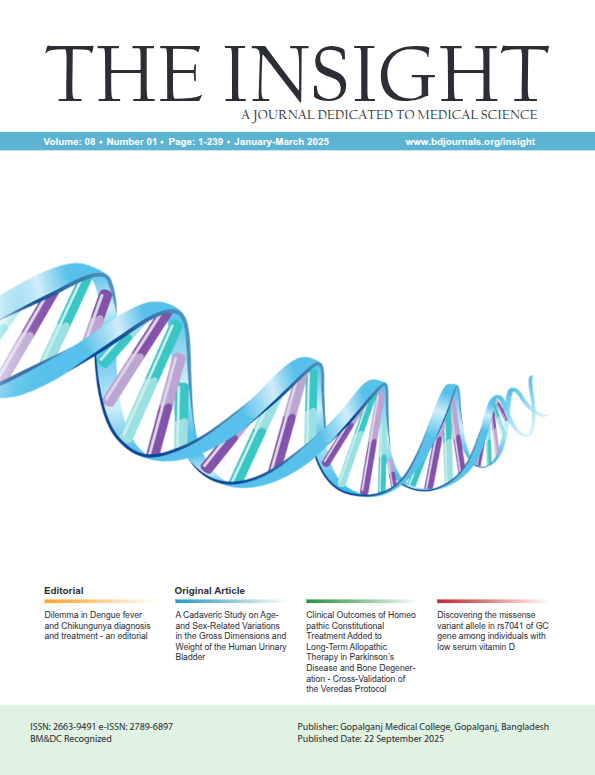Abstract
Background: Dengue fever is an acute febrile illness spread by the bite of Aedes mosquitoes infected with one of the dengue viruses (DENV), a member of the Flaviviridae family, with four distinct but closely related serotypes (DENV-1 to 4). It is a major health burden particularly in tropical and subtropical areas of the world. Primarily transmitted by the female Aedes aegypti mosquito and to a lesser extent, Adeses albopictus. Symptoms range from fever, nausea, and rash to severe conditions like Dengue hemorrhagic fever (DHF) and Dengue Shock Syndrome (DSS), which involves hemorrhage and organ failure. In endemic countries such as Bangladesh dengue has transitioned from sporadic outbreaks to a sustained seasonal pattern with recent increased case numbers and fatalities. Understanding epidemiology, risk factors and disease burden is essential for prevention and control measures. Early diagnosis and monitoring are crucial to reduce morbidity and mortality. Aim of the study: This study aims to assess the common clinical profile and their outcome in patients admitted in Khulna medical college hospital of Bangladesh. Methods: This six-month cross-sectional study at Khulna Medical College hospital, Khulna aimed to evaluate the clinical profile and outcomes of 550 dengue-confirmed patients. Inclusion criteria included an oral temperature of 100.4°F or higher, fever for less than seven days, and specific symptoms like headache, joint pain, or vomiting. Exclusion criteria were other viral fevers or specific diseases. All patients were confirmed dengue cases based on NS1 antigen positivity. Data collection involved detailed clinical monitoring and examinations. Data were analyzed using SPSS (version 26.0). Result: The study included 550 dengue patients, mostly aged 20-40 years (50%), with a mean age of 27.15±14.089 years. Males comprised 60.45% of cases. Urban residents made up 70%. The mean monthly income was BDT 38,529. Fever was the most common symptom (93.18%), followed by nausea/vomiting (60.91%) and headache (45.91%). Common complications included breathlessness (41.36%), pleural effusion (39.09%), and abdominal ascites (29.55%). Hospital stays averaged 4.8±2 days, with 94.55% recovering and 5.45% dying. ICU stays averaged 2.2±2 days, with 58.64% staying three days or less. Conclusion: This study on dengue in Khulna, Bangladesh, found that most patients were adults (20-40 years) with a mean age of 27.15 years. Males were more affected, with fever as the primary symptom. Common complications included breathlessness and pleural effusion. The high recovery rate was 94.55%, with a 5.45% mortality rate.

This work is licensed under a Creative Commons Attribution 4.0 International License.
Copyright (c) 2025 The Insight





 PDF
PDF